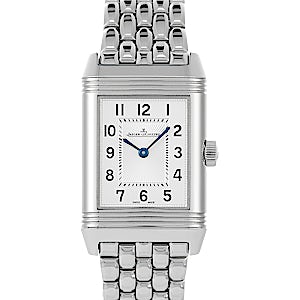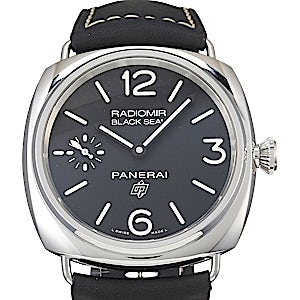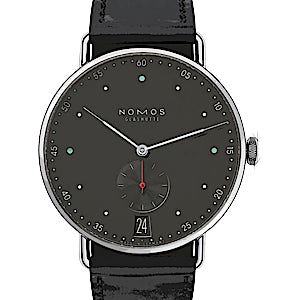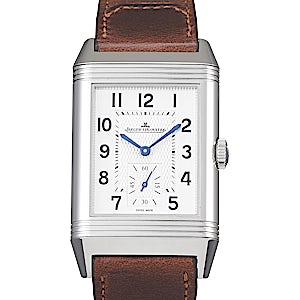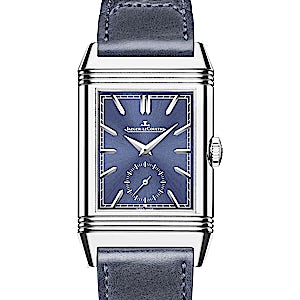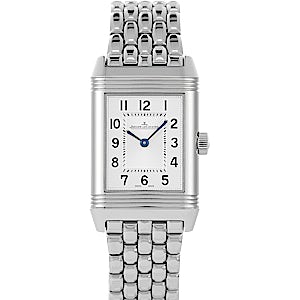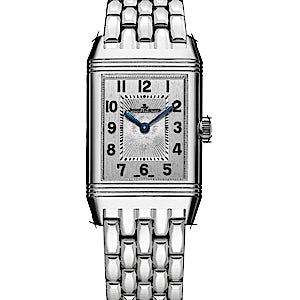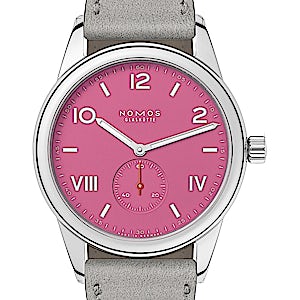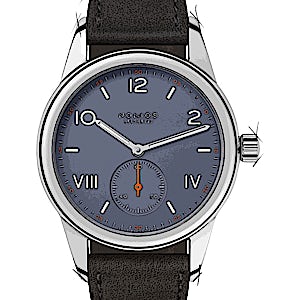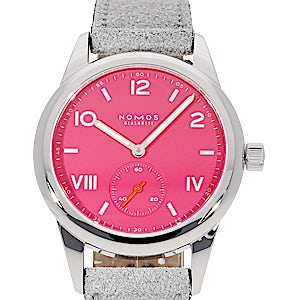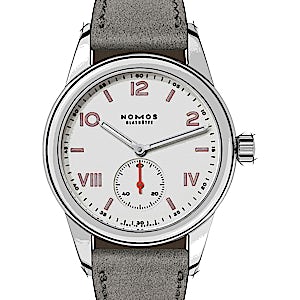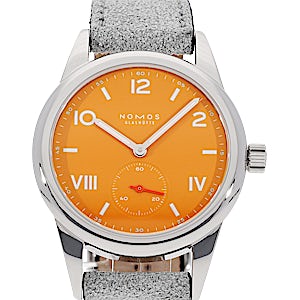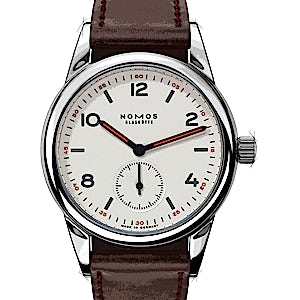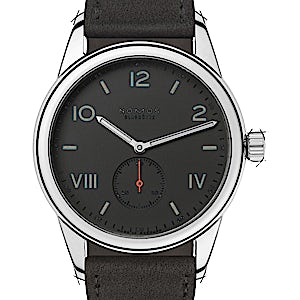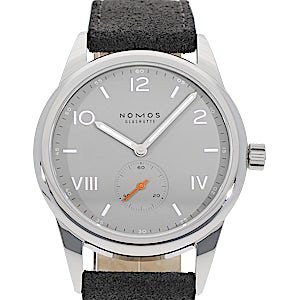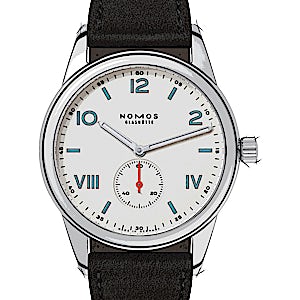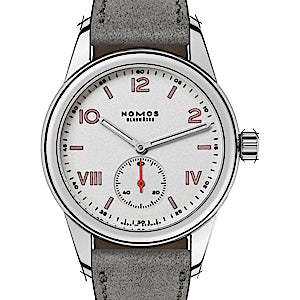Hand-Wound Watches
Hand-wound watches in the CHRONEXT-Online-Shop
A hand-wound watch represents the century-old tradition of watchmaking. Although the automatic watch is an advancement in watchmaking, manual-winding watches have not lost their charm and still attract multitudes of watch enthusiasts who are drawn to the history and tradition of horology.
Hand-wound mechanical watches – the traditional manual movement
In the hectic lives we lead these days, the automatic watch enjoys a great deal of popularity amongst watch wearers, especially when it comes to watches for everyday use. Nevertheless, many a watch enthusiast still appreciates the traditional hand-wound watch, as it imparts a feeling of nostalgia and tradition, bringing the wearer back to bygone days. Furthermore, non-automatic watches do come with certain advantages: For all those whom the watch acts as more than a simple tool to measure the time, the winding of a manual watch is often a meditative activity. Through this ceremonious act, the wearer connects with the spirit of watchmaking and can tangible appreciate the meticulous work that goes into the creation of a watch.
To set the time – to wind the watch – is a meditative act, a singular moment, wherein one connects their watch, allowing them to momentarily, uncompromisingly connect that constant companion. There are watch enthusiasts who look to cultivate this familiarisation and appreciation for horology – it is comparable to people who enjoy driving manual transmission cars. To meet the needs of all watch enthusiasts, many brands, such as Omega , Junghans, or Nomos, continue to manufacture these traditional hand-wound movements.
The history of the hand-wound watch and how it functions
The winding mechanism has undergone some impressive developments in its time. Early on, pocket watches had to be wound using a keywind system. This meant that a special key had to be used to wind the mainspring located within a barrel or fuesee of the watch. Later, a keyless stem-winding system was invented in 1842, by Jean-Adrien Philippe. These first versions of the mechanical manual pocket watch had to be hand wound via a crown. This crown also doubled as fastener to which a necklace could be attached to, allowing the watch to be worn as a pendant.
Charles Antoine LeCoultre is also considered one of the fathers of the crown-wound pocket watch. He developed the first example of one of these watches in 1874, where the crown not only wound the watch, but was also used to set the time. To this day, the winding system designed by LeCoultre is a common manual-winding mechanism, where, in order to set the time, the crown must be fixed in a different position. This is easily done by pulling the crown out slightly.
The hand-wound movement was a very practical innovation. It became increasingly popular with the use in wristwatches later. The way it functions is quite simple: By winding the crown, the mainspring is charged and energy is stored. The cogwheels transfer that force throughout the watch to the balance wheel and escapement. The escapement then acts as a pendulum would in a grandfather clock, moving back and forth in quick and steady succession to accurately measure the time. Today, watches with manual-winding movements showcase ever greater power reserves, meaning that the models do not need to be wound as frequently.
Winding a mechanical hand-wound watch
The fact that mechanical hand-wound watches require more attention than an automatic watch is not considered a disadvantage by watch enthusiasts by any means. Winding takes little time, as the crown only needs to be turned clockwise by hand until you feel some resistance. The power reserve will differ across models and watch brands. In order to prevent a manual-winding watch from stopping, it should be wound regularly. There are also automatic winders for manual watches that keep manual-winding models running.
One advantage of hand-wound watches is that by the omission of the self-winding rotor, the watches are often much slimmer than automatic watches. These watches are especially elegant and are perfect models to be worn to formal functions. Hand-wound watches are not just dignified in their appearance, but due to the lack of a rotor, they also allow an unobstructed glimpse into the wonderful mechanics of the watch. And so, watch enthusiasts can enjoy a clear view of the movement and its parts, watch as the cogs turn or how the balance spring beats, and observe the fascinating harmony of all the components working in unison.
Top 7 watches with hand-wound movements
1. Omega Speedmaster Professional Moonwatch
One of the most well-known watches amongst them all is the Omega Speedmaster Professional and it has been a star in the world of watches ever since it was the first watch to set foot on the moon, as it were. Indeed, it is likely the most famous chronograph in the world, created by one of the most renowned watch brands. Ever since the founding of Omega more than 160 years ago, they have been manufacturing models of the highest calibre; their involvement as the official timekeeper in the Olympics, for instance, is just one example of how Omega have proven the quality of their watches. It is no wonder NASA chose the Speedmaster as the watch to be worn by their Astronauts.
2. Panerai Luminor Base 8 Days
Ever since Panerai were founded in 1860 in Florence as a watch shop, as well as the first watchmaking school in the city, they have been creating brilliantly unique watches. Some of their first wristwatches were the military models created for the Royal Italian Navy – for the Italian frogmen commandos, to be exact. The first Panerai Radiomir models had to be exceptionally legible and water-resistant, and the watches they produce today still are. Today Officine Panerai resides in Neuchâtel where they manufacture some of the most popular models in the world of watches today. Amongst these, of course, are the Panerai Luminor models with their unmistakable cushion cases and crown guards.
3. IWC Portugieser Hand-Wound Eight Days
Since 1868, the International Watch Company (IWC) has been creating watches with the greatest level of watchmaking engineering. The brand located in Grenchen prides itself on their models which have always showcased some of the finest advanced watchmaking innovations. Not only this, the watches they create are some of the most exclusive and beautiful. The IWC Portugieser with its incredible 8-day power reserve is just one example. The hand-wound movement represents that which IWC perpetually strive to towards, and that is to create technically impressive, as well as aesthetically inspiring watches.
4. A. Lange & Söhne Lange 1815
If one were to describe A. Lange & Söhne in one sentence, one could perhaps say that they are the Patek Philippe of German watchmaking. That is to say that A. Lange & Söhne are similar in recognition and acclaim, yet in no way the same; they have their own unique methodology and philosophy that shines through in their watches. The Second World War had caused the closure of many of the German watch companies. Only later were numerous brands revived and in 1990 the great-grandson of the original founder brought the brand back to life. Ever since they have been creating watches with the finest of workmanship.
The Lange 1815 is just one of these impressive pieces. ‘1815’ is a nod to the birth year of their original founder, Ferdinand A. Lange, and just a the watches that were first created by him and his sons, the Lange 1815 showcases traditional design that represents the spirit of A. Lange & Söhne (www.chronext.co.uk/a-lange-soehne). Their exalted heritage has survived the years, despite the brand’s trials and tribulations.
5. Jaeger-LeCoultre Reverso
The Reverso from the watchmaker’s watch brand Jaeger-LeCoultre is a legendary model designed in an Art Deco style. Created in the early 1930s as a watch for polo players, it has withstood the test of time and has become one of the greatest icons in horology. The Reverso allows the case to turn inward, a feature that was designed to in order for the crystal to be protected from damage during the polo matches. Its oblong design is one of the hallmark features of the watch, which sits handsomely on the wrist. Amongst the Reverso line, there are of course hand-wound models, as well. Arguably, these hand-wound models bring the wearer closer to his or her watch through the ritualistic winding of the crown.
6. Vacheron Constantin Patrimony
Among the exceptional watches of Vacheron Constantin are the Patrimony models that embody the essence of the brand. As patrons of the artistic craft, Vacheron Constantin celebrate the pure nature of their artisanship as well as their own lineage, which has provided for the passing down of horological expertise since 1755. It is no wonder, that the Patrimony stands out amongst some of the most well-known watches in the world. It is an elegant watch that houses a magnificent movement with the finest of finishing. Vacheron Constantin is truly a master in the art of watchmaking, and the Patrimony is just one of the magnificent models they offer.
7. Nomos Tangente
The wonderful hand-wound Tangente is the embodiment of the ethos Nomos prides themselves on. The simplicity of the watch, with its straight lines and slender curves, is a paragon of what it means for form to follow function. The Tangente is a design classic – it is no wonder that it is one of the most popular models in the Nomos collection.
